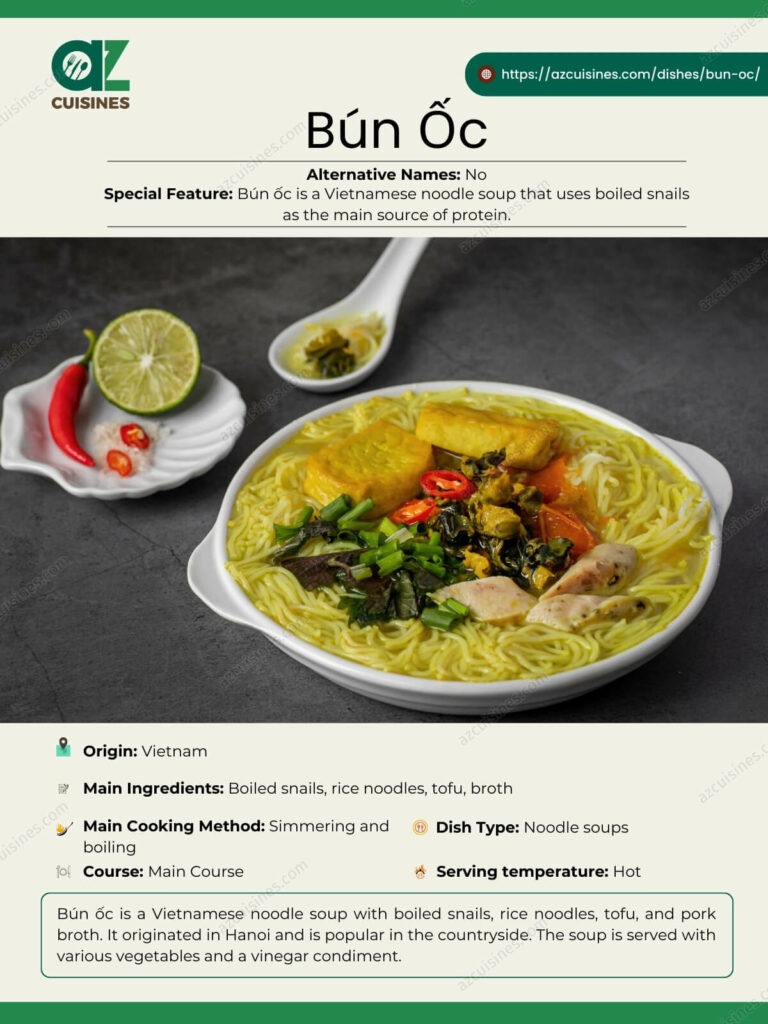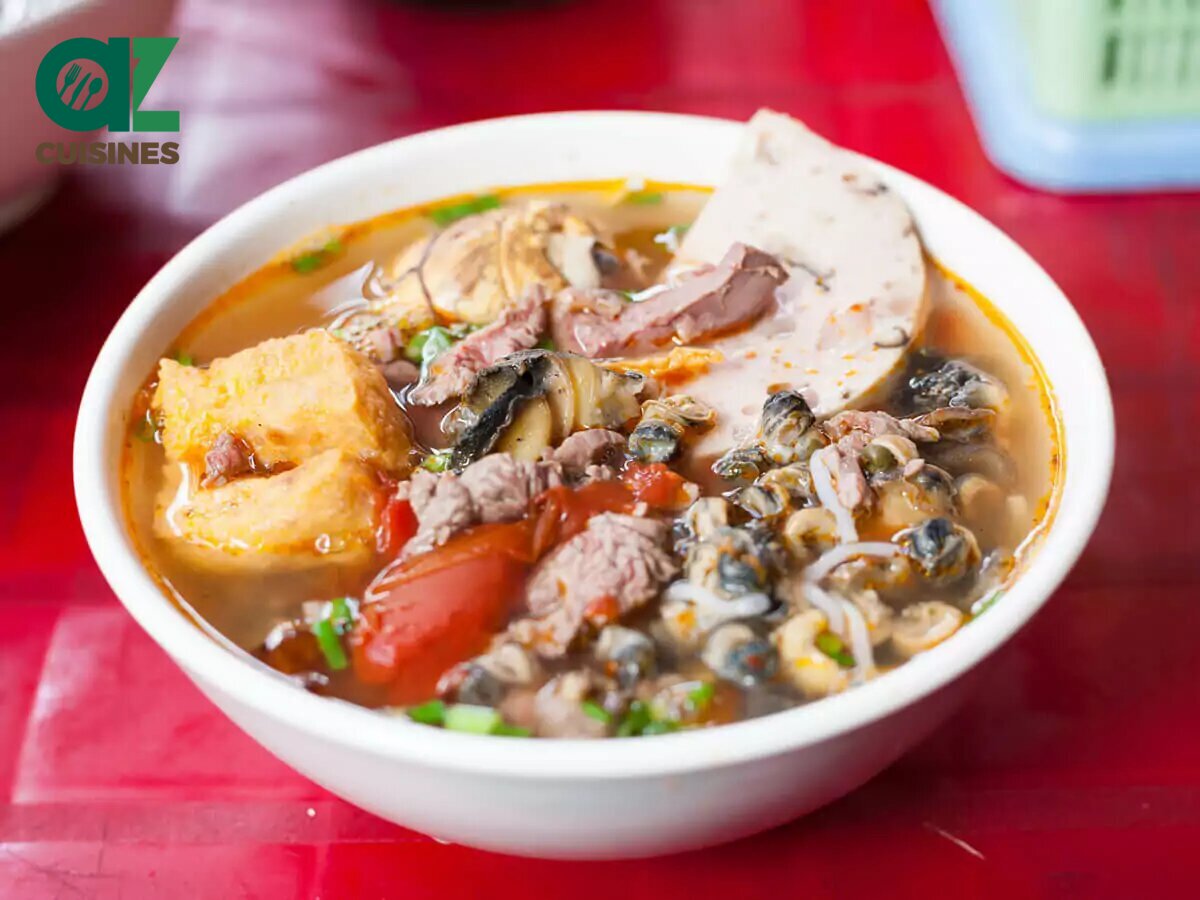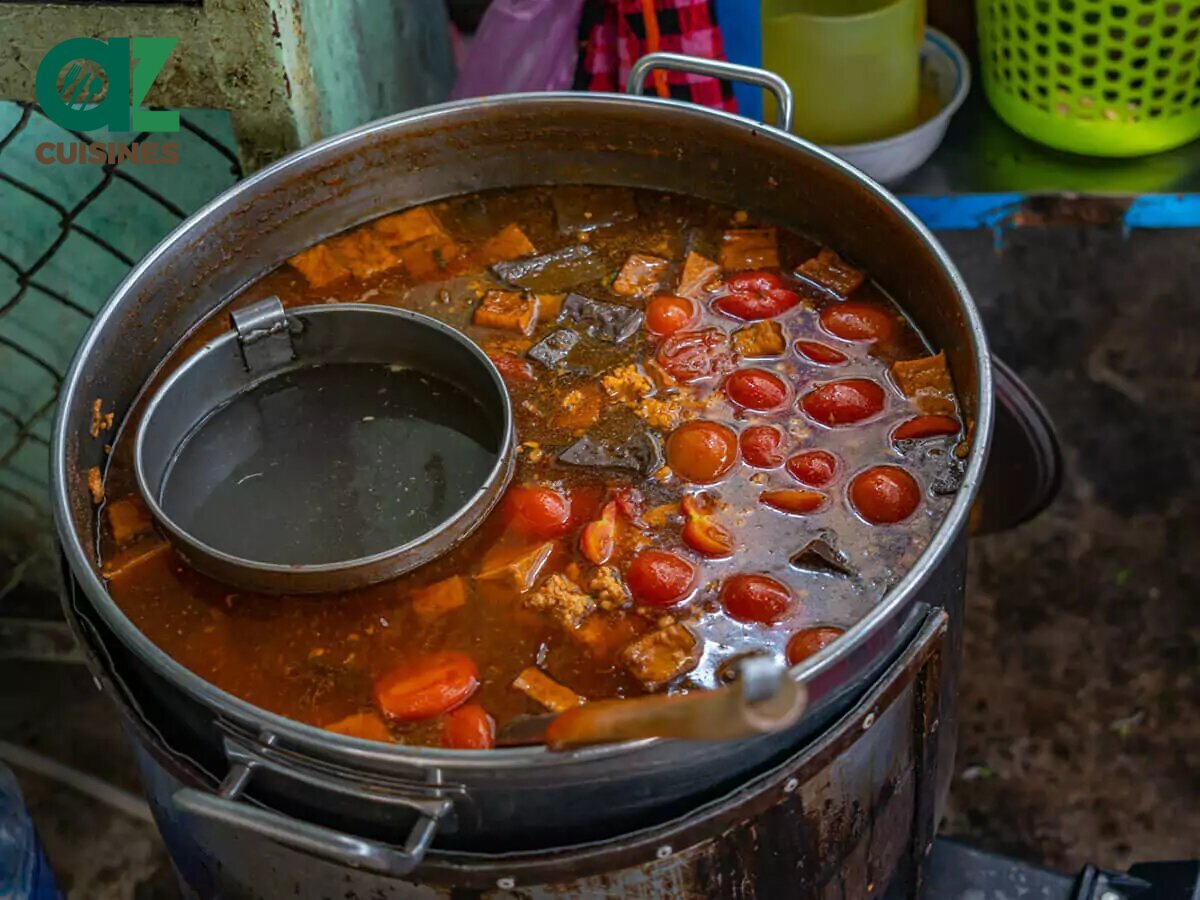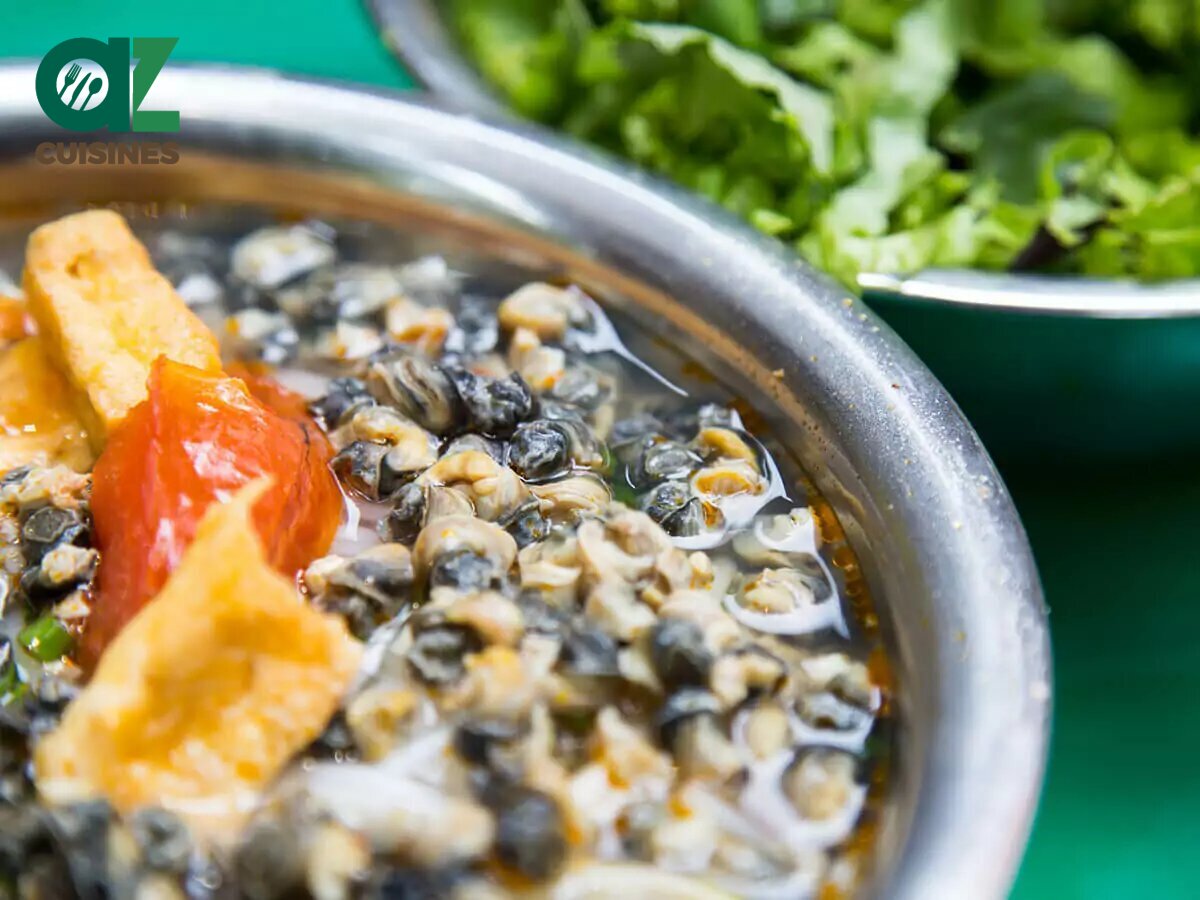#72 in Vietnam
Bún Ốc: Basic Information
Pronunciation
Alternative Name(s)
Dish Type
Course
Mealtime
Popular Variations
Bún Ốc: Ingredients and Preparation
Main Ingredients
Main Cooking Method
Preparation Process
Bún Ốc: A Deep Dive
Cultural Significance
Taste
Texture
Aroma
Color
Serving Style
Serving Temperature
Accompaniment
Occasions
Seasons
Special Diets
Calories
Popularity
Popular Similar Dishes
Popular Dining Area
Bún ốc, often known as snail vermicelli soup, is a one-of-a-kind Vietnamese noodle soup with boiled snails as the main topping, served with rice noodles, tofu, and a savory bone broth. Created in Hanoi, this favorite street food dish is believed to come from the countryside.
Ideally, locals prefer the small snails for their crunchy texture after being boiled. Furthermore, the rice noodles need to be thin to soak up all the flavorful broth.
Hanoians also incorporate vegetables like bean sprouts, green bananas, water spinach, water dropwort, and tomatoes.
However, Hanoi people usually add giấm bỗng, a vinegar condiment, for an acidic touch to the sweet tomato broth.
To add to that, the snails used in traditional bún ốc need to be alive and cleaned by soaking them in a mixture of vinegar or lime juice with chopped fresh chili for a few hours.
To fully understand bún ốc, I suggest digging deeper into the pros and cons of eating this noodle soup along with a few common concerns around it. Also, don’t miss dishes that are similar to bún ốc.
Key Points
Bún Ốc Images
Pros and Cons of Eating Bún Ốc
Before diving into a unique dish such as Bún ốc, here are a few things to consider carefully to avoid any unwanted effects on your body:
Pros
Cons
To know more about bún ốc, allow me to take you to some of the common inquiries that people often have about this snail noodle soup.








Truc Tran (Kris)
Senior Food Editor
Expertise
Home Cooking, Meal Planning, Recipe Development, Baking and Pastry, Food Editor, Cooking-video Maker, Vietnamese Food Evaluation Expert
Education
Truc Tran (Kris), an experienced food writer and editor, is great at exploring and describing global cuisines, from simple street food to fancy dining. In her writing, she skillfully mixes different flavors, cooking methods, and culinary traditions, showing the unique character of various cultures through their food and drinks. On azcuisines.com, Kris highlights her knowledge, especially in Asian cuisine and worldwide traditional dishes.